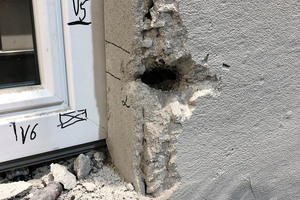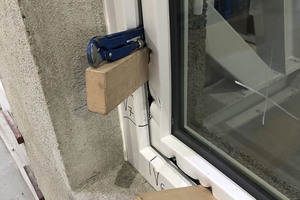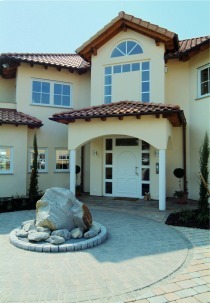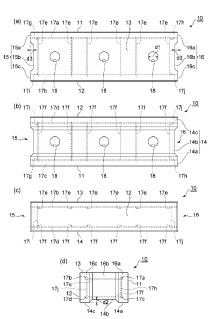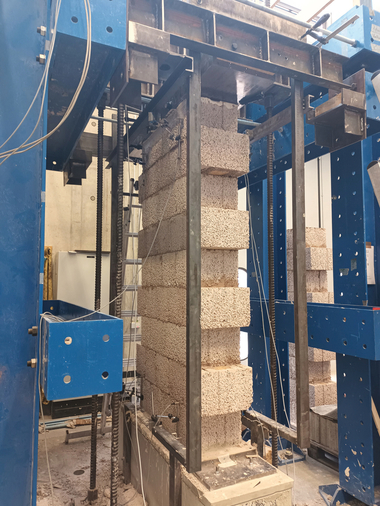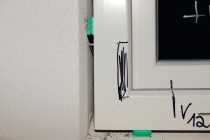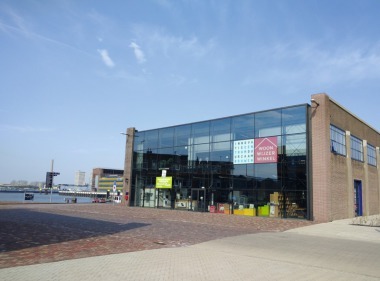Burglar resistance using masonry and walls made of lightweight concrete
The product range of lightweight-concrete and concrete block masonry includes both heavy, high-strength blocks for interior walls, party walls, and double-skinned, additionally insulated (ETICS) exterior walls, as well as lightweight, highly heat-insulating blocks for monolithic exterior walls.
Whilst the installation of burglar-resistant building elements in masonry of heavy, high-strength lightweight-concrete and concrete blocks has always been covered by DIN EN 1627 up to resistance class RC 6, no regulation has to date been in place governing the installation in lightweight, highly heat-insulating blocks for monolithic exterior walls. This type of masonry is produced using blocks of lower apparent density and compressive strength classes in order to comply with even the highest requirements of the Energy Saving Ordinance and Energy Performance of Buildings Act in terms of reducing transmission heat losses of the building envelope.
For this reason, investigations into the burglar resistance of highly heat-insulating monolithic lightweight-concrete masonry were carried out by ift Rosenheim. The investigations carried out lead to the conclusion that monolithic lightweight-concrete or concrete block masonry with a wall thickness ≥ 365 mm and rendered with a type I or type II light rendering mortar is suitable for the installation of burglar-resistant building elements if installed in the central third of the jamb of resistance class RC 2 recommended by the police. Even in the case of an attack on the wall itself, it was not possible to create an accessible opening. Based on the results of the investigation, an addition to Table NA.2 of DIN EN 1627/NA was applied for with the competent mirror committee so as to enable, in future, a statement supported by the relevant standards to be made on the burglar resistance or resistance class, respectively, of the full product range of lightweight-concrete and concrete block masonry.
Since the product range of the lightweight concrete industry also includes prefabricated wall elements in accordance with DIN EN 1520, a corresponding RC 2 verification has also been successfully provided for such an element.

